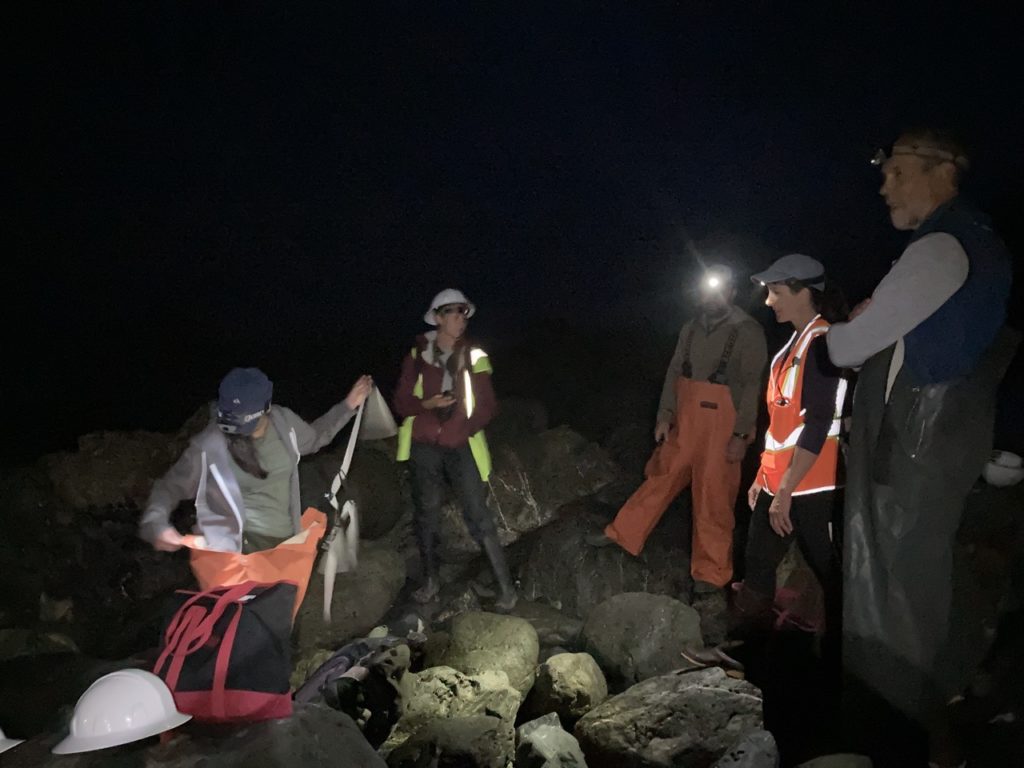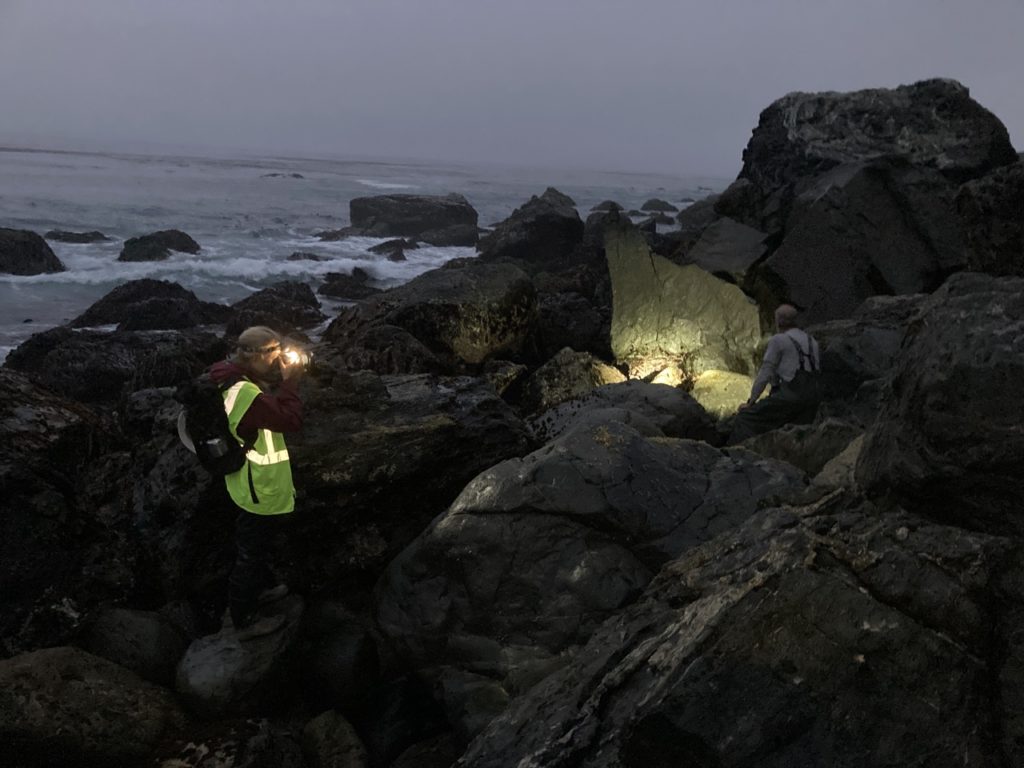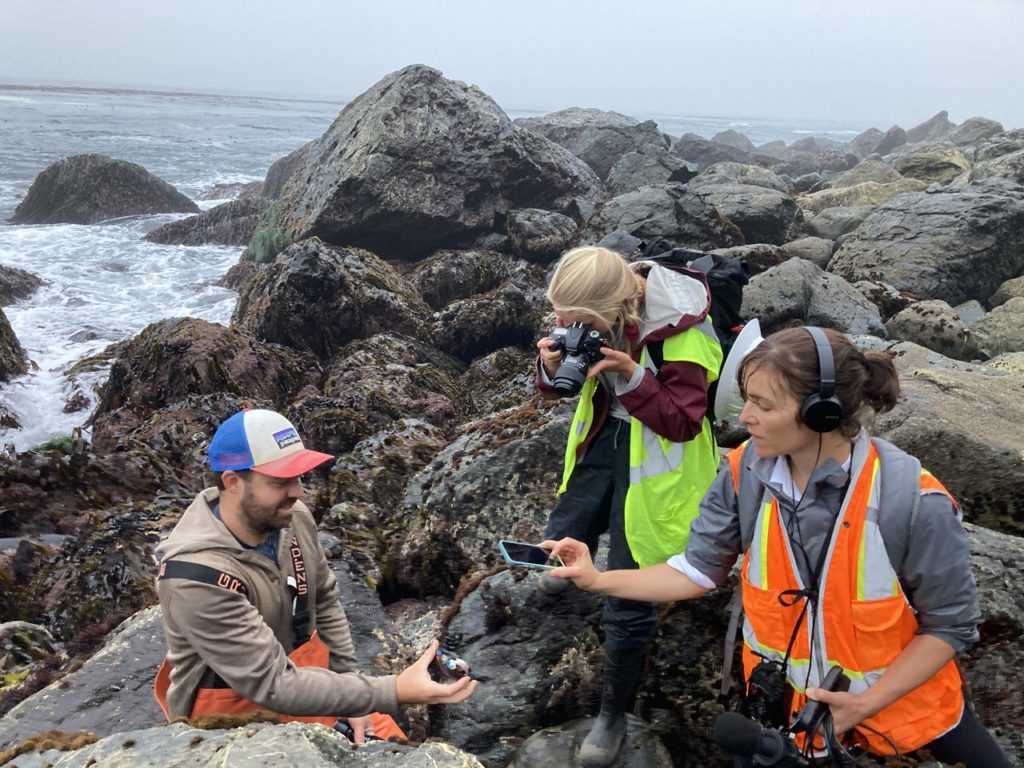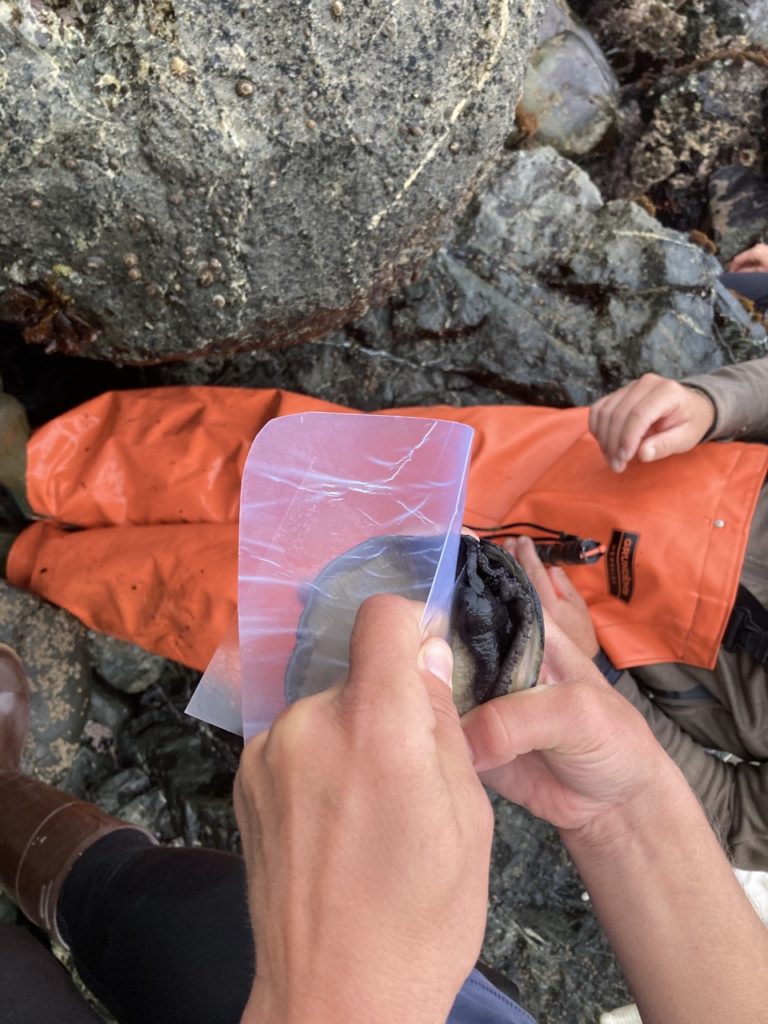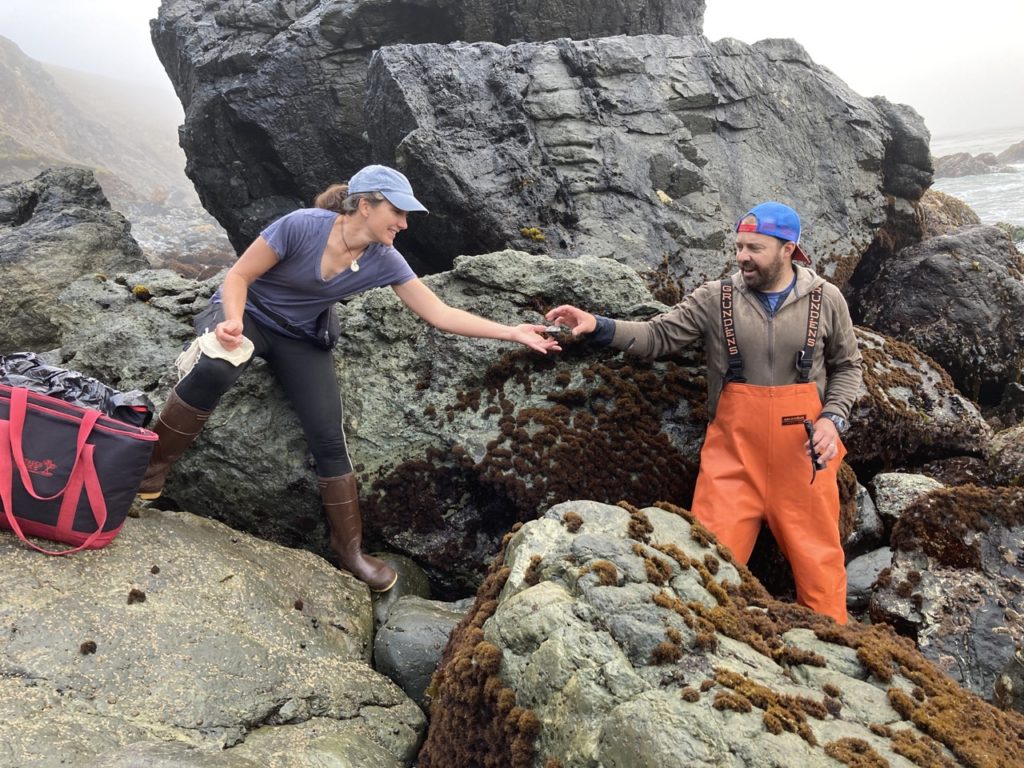Endangered black abalone (Haliotis cracherodii) were rescued in the winter (Feb-March 2021) after a lethal combination of the Dolan Fire and an atmospheric river (AR) event generated multiple debris flows burying several hundred meters of rocky intertidal habitat under terrestrial sediment. In July 2021, nearly 150 rescued abalone were returned.
UC Santa Cruz doctoral student Wendy Bragg was in the process of collecting data from multiple sites within the Dolan Fire scar when the January 2021 AR extreme precipitation event occurred, a deluge of 15 inches of rain on the Big Sur coast in less than 72 hours. As Wendy and a team of scientists went back to the sites in February to assess the damage, they were met with massive amounts of death and a rocky intertidal that had, in many cases, turned into sandy beach, covered with several feet of new sediment washed down from the burned watershed above.
Wendy and her colleagues began to dig and unbury dozens of black abalone, which were still alive in most cases, and transported them to a facility with running sea water systems to recuperate. Working with multiple agencies that oversee the management of the endangered black abalone, Wendy was able to rescue almost 200 black abalone from several sites in Big Sur. Although some of the black abalone succumbed to injuries while in the holding facility, about 75% survived, and during July 2021 nearly 150 black abalone were returned to sites in Big Sur that had not experienced debris flows.
Since black abalone occur in the mid to lower intertidal zone, you need good low tides to access them without wearing a wet suit and being hit by incoming waves. During the summer, such low tides occur very early in the morning. On July 11th, for example, scientists met at 1 AM to drive down to Big Sur, and were hiking out to the out planting site before sunrise, using headlamps to scramble over wet, jagged boulders and reef. To learn more about this experience, read this article by Anne Marshall-Chalmers in the journal Inside Climate News.
Below are some photos from the July 11th field excursion to return black abalone. All photos by Dr. Steve Lonhart, NOAA MBNMS, and a collaborator on the project.
